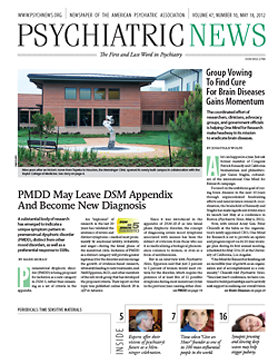For what appears to be the first time, a gene that seems to account for both a difference in brain size and a difference in IQ has been identified.
The finding was made possible through a vast international scientific enterprise, including more than 200 scientists from 100 institutions who combined brain images and gene sequencing from more than 20,000 healthy subjects. Such a combination, called neuroimaging genetics, is frontier science.
“This project was a bit of a gamble,” the lead scientist, Paul Thompson, Ph.D., a professor of neurology and psychiatry at the University of California, Los Angeles, told Psychiatric News. But because he and his colleagues were able to amass brain scans and gene sequencing from so many individuals, they were able to “see, in a brain scanner, how single-letter genomic changes affect the brain.” They reported their findings in Nature Genetics on April 15.
The gene that he and his team have linked not only to brain size but to IQ is called HMGA2 and is located on chromosome 12. “In that gene, half the world has a letter C and half the world has a letter T,” Thompson explained. “It is just a single-letter change in the code. The people with a C have a brain that is bigger by about half a percent. It doesn’t seem like a lot. Their IQ is about 1.3 points higher. So it is a modest difference, but certainly detectable.”
This is not the first time that a gene involved in human intelligence has been identified, Thompson pointed out. “In fact, there has been a range of leads over the years, which have implicated various genes. But the reason they haven’t replicated strongly is because the effects are so small.”
The HMGA2 gene is also intriguing in that it has been linked with height and is involved in how aggressive a cancer is, Thompson continued. “It seems to regulate cell proliferation, not just for good things like building a brain, but for damaging purposes, like making tumors. It is a very important gene in cancer.”
The researchers reported another interesting finding as well—that another gene on chromosome 12 called TESC is linked with hippocampal volume.
Thompson and his colleagues are now partnering with Patrick Sullivan, M.D., a professor of psychiatry and genetics at the University of North Carolina, and his coworkers to see whether the HMGA2 gene and the TESC gene might play a role in psychiatric illnesses such as bipolar disorder, major depression, or schizophrenia. In other words, as Thompson explained, “We know that brain volume buffers against all of these mental illnesses—higher brain volume is somewhat protective. So let’s partner with the psychiatry folks and see which of the diseases these genes affect. I think that is tremendously exciting.”
Thompson believes that the findings might have clinical implications. “We’ve focused very strongly on neurotransmitters, but we really need new drug targets for the major mental illnesses and Alzheimer’s disease. This gives us a lot of new leads. Who would have thought that an oncogene would be relevant?”
The project was funded by hundreds of federal government and private agencies around the world, including the U.S. National Institutes of Health.



